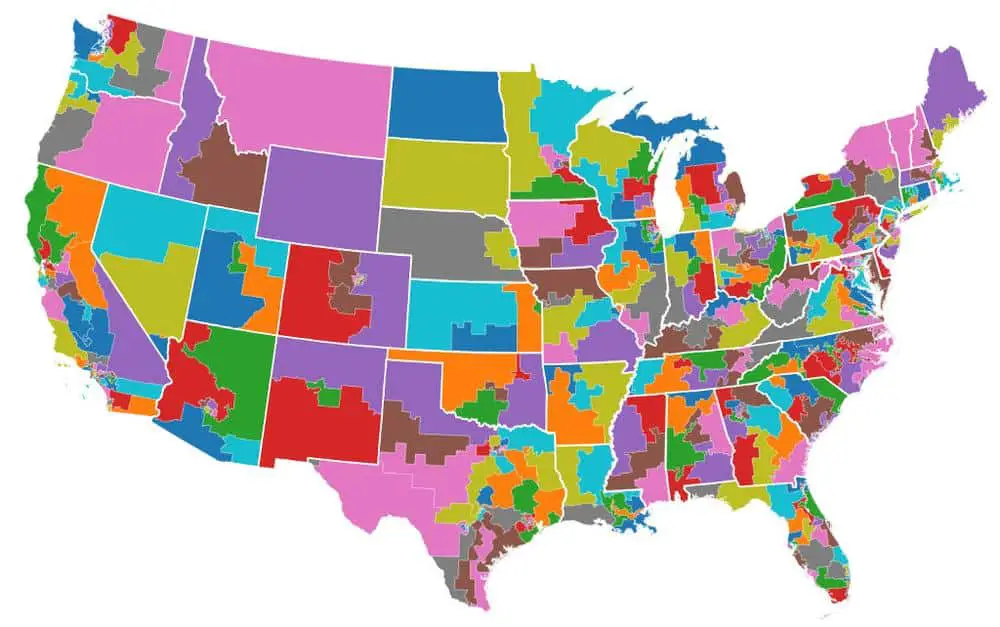Gerrymandering is a political term, but I want to keep “politics” and any bias’s out of this article.
Politics aside, truth is always truth, and as a human, we all know that fair is fair.
I want an understanding of gerrymandering with-out any political slant to it. So in this article we dive into into the past, present, and future of gerrymandering.
Gerrymandering is a weird word, and as it turns out has a funny history behind it.
Politics is a complex arena, and it’s difficult to process unbiased information (in both directions) through the different media channels and through social media channels.
After doing some digging, here’s what’s true and what not.
Exactly What Is Gerrymandering ?
Gerrymandering is a term used to describe how a political voting district gets dived up in an unconventional way.
This unusual and awkward district border is created in order to gather more votes for one political party or another.
By “”gerrymandering”” a district it means that the same population of a district is sliced and diced to create a different voting outcome.
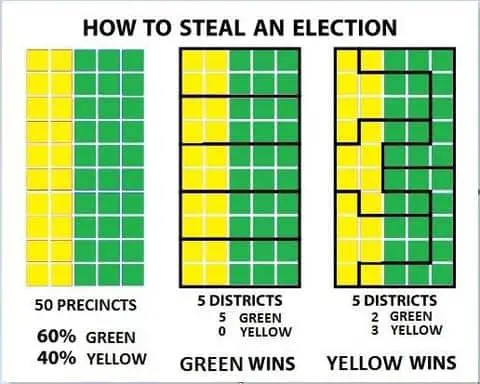
So depending on the size of a district, you can see how votes can get manipulated against the majority just by ‘re-drawing’ or “gerrymandering” the district lines.
Often with gerrymandering, districts get divided (or chopped up) in ways that make very little sense geographically.
When this general principle gets applied over multiple districts in multiple states, it can have a huge impact on both state-wide and national elections.
Two Types of Gerrymandering
- Packing
Packing happens when you redraw the district to condense opponents in a specific area.
Packing also happens when you join two adjacent territories to form 1 district so there can be one representative district instead of two.

- Cracking
Cracking happens when you redraw political boundaries to spread the opposition’s votes across several districts.
With your political party representing more seats in Congress, you would have more political power and control in the government.
Why is Gerrymandering Used?
Gerrymandering is all about gaining or maintaining political control.
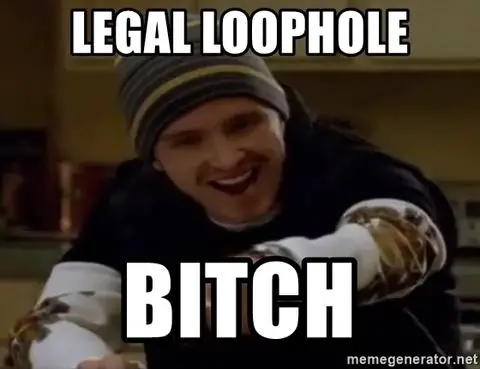
By reducing the impact of your opposition, you can work to increase your odds of winning in a coming election.
Gerrymandering is basically a legal way to corruptly influence an election or set of laws.
If you have more districts and more representatives in congress, then it is easier to influence laws and manipulate government action.
The question is, who’s in charge of drawing these districts?
Who Draws State Districts in Gerrymandering Cases ?
In states where gerrymandering is the most prevalent , the districts are drawn up the the “State Legislature”.
Who’s the state legislature?
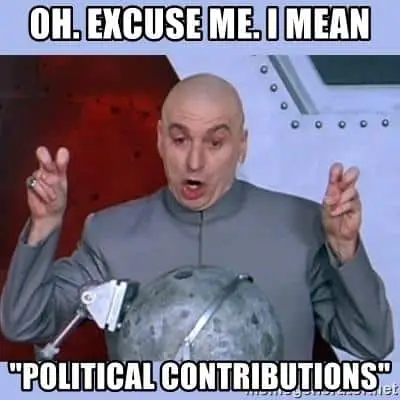
The state legislature is made up of over 100 voting members of state level politicians.
These state level politicians vote on the district lines.
Unfortunately, large corporations with “National Political Interests” are spending a lot of money on “local” state elections in order to get local politicians elected who , once elected, will vote to change the district borders.
These massive corporate campaign contributions that lead to “gerrymandered” districts are essentially a legal loophole for corruption.
Why Should You Be Conscious of Gerrymandering?
Politics is full of all sorts of moves and manipulations to ensure triumph.
It doesn’t matter which party you’re from, they do this.

Gerrymandering is just one of these tools used by various political parties to tilt an election to one side or the other.
As long as gerrymandering is legal, it will be difficult for district elections to be fair.
It doesn’t take a genius to look at the district borders and know that something “fishy” is up.
As a citizen whose voting rights may be affected by the shifting of the electoral powers, being mindful of these political concepts will put you at a greater advantage and a deeper understanding.
Knowledge is power.
Now that you know what gerrymandering is all about, it is easier to understand why a proposal for “redistricting” is a big issue you need to watch out for.
How Is Gerrymandering Even Legal?
Gerrymandering is a clear and blatant violation of the constitution as it gives a political party an electoral advantage over another.
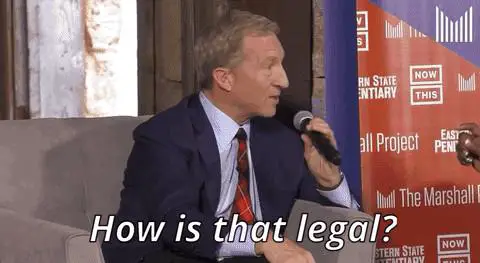
It undermines the integrity of the democratic process by allowing politicians to choose their voters instead of people choosing their politicians.
However, while it is true that you can’t always tell a gerrymandered district by its shape, the question is not up to the court.
It has been settled that while the court has rendered gerrymandering unconstitutional, the rightful body to determine its existence is the state legislatures.
Currently, the court does not have a manageable standard to identify whether gerrymandering exists.
Usually, the legislature would still have a hearing to identify whether there is gerrymandering.
Consequently, if it is found that the apportionment is a case of gerrymandering the action is nullified and the legislative district will go back to its normal state.
How Did “Gerrymandering” Get Its Name?
Gerrymandering is in the new lately, but it’s existed for over 200 years.
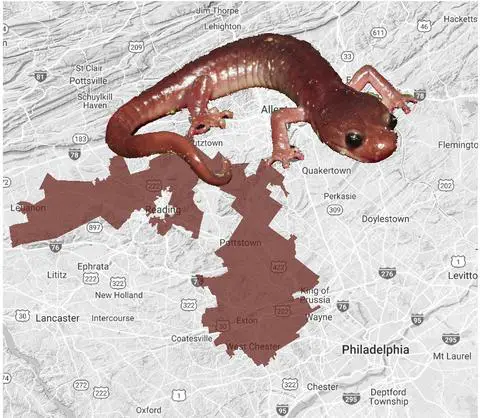
The first case of gerrymandering happened in 1810 in Massachusetts when Gov. Elbridge Gerry re-drew the districts in the northern part of Massachusetts so his two colleagues could hold on to power.
As a result of the “redistricting”, the lines drawn on the map were shaped like a Salamander.
The press went crazy, as you can imagine this was a pretty blatant form of corruption, and they called the re-districting scandal “Gerry’s Salamander”.
Gerry and Salamander were mashed together in the public’s mind and BOOM.
Just like that, the word “gerrymander” suddenly spread throughout different states and was carried through different generations.
200 years later, we’re still using the term today.
Throughout history, there have been many instances where district lines were redrawn to minimize the impact of minority voters, usually by packing them into one area.
Major Gerrymandering Examples in the United States
North Carolina
This case is a clear example of racial gerrymandering.
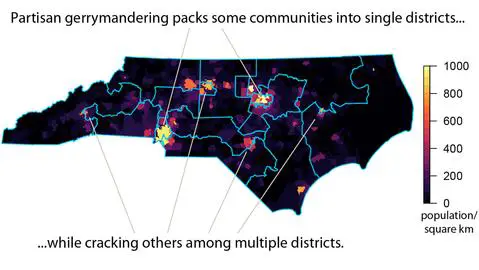
In 1993, North Carolina proposed redistricting to create a majority-black district for having a black representative winning a seat in the congress.
However, the second district was very irregular, leading to a lawsuit.
North Carolina submitted a second proposal to create two black-majority districts but it was still rejected by the U.S. Attorney General.
This was because the district shape was still very unusual and that while it is racially neutral on its face, the resulting shape is suggestive of its intention to divide the state based on race.
Texas
In 1996, Texas used sophisticated software and data to reapportion districts and have one district for the Hispanic and African-American.
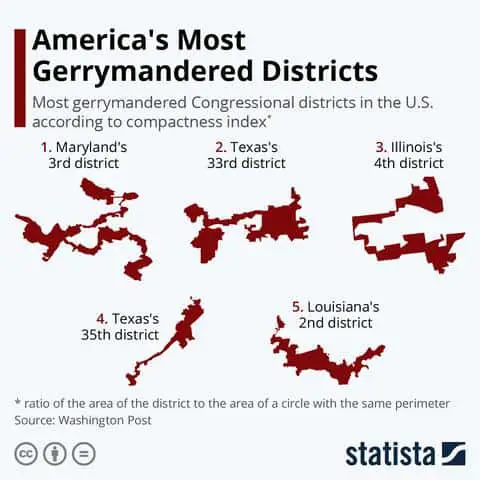
The result could have given them three extra seats in the congress.
However, it was again turned down by the Supreme Court because the division was based on race.
Alabama
In 2018, Alabama proposed for reapportionment allowing another black-majority district.
According to the state, only one of the seven districts has black-majority voters.
However, the court rejected the proposal as it was without sufficient justification for separating its citizens into different voting districts based on race.
There are also examples of partisan gerrymandering. Partisan gerrymandering mainly aims to weaken another political party or to favor another.
Conclusion
Gerrymandering is an existential threat to democracy.
It condenses majority of power to one political party thereby weakening the other in an unreasonable way.
The strength in democracy lies with the people and in majority voting. gerrymandering disrupts the natural checks and balances of democracy.
If you want to protect your right as a citizen you need to be conscious.
While it has become acceptable worldwide to think of redistricting and re-apportionment of government districts, you need to know the elements of gerrymandering so you will know when to voice your opposition.
Loved what you read?
Hit that share button and let the world in on the secret – we’d be thrilled!
Got thoughts? We’re all ears for your feedback, corrections, or a good old chat. Don’t be shy; drop us a line.
And hey, don’t miss out on our curated list of must-reads in the recommended books section.
Big thanks for diving in with us today!


